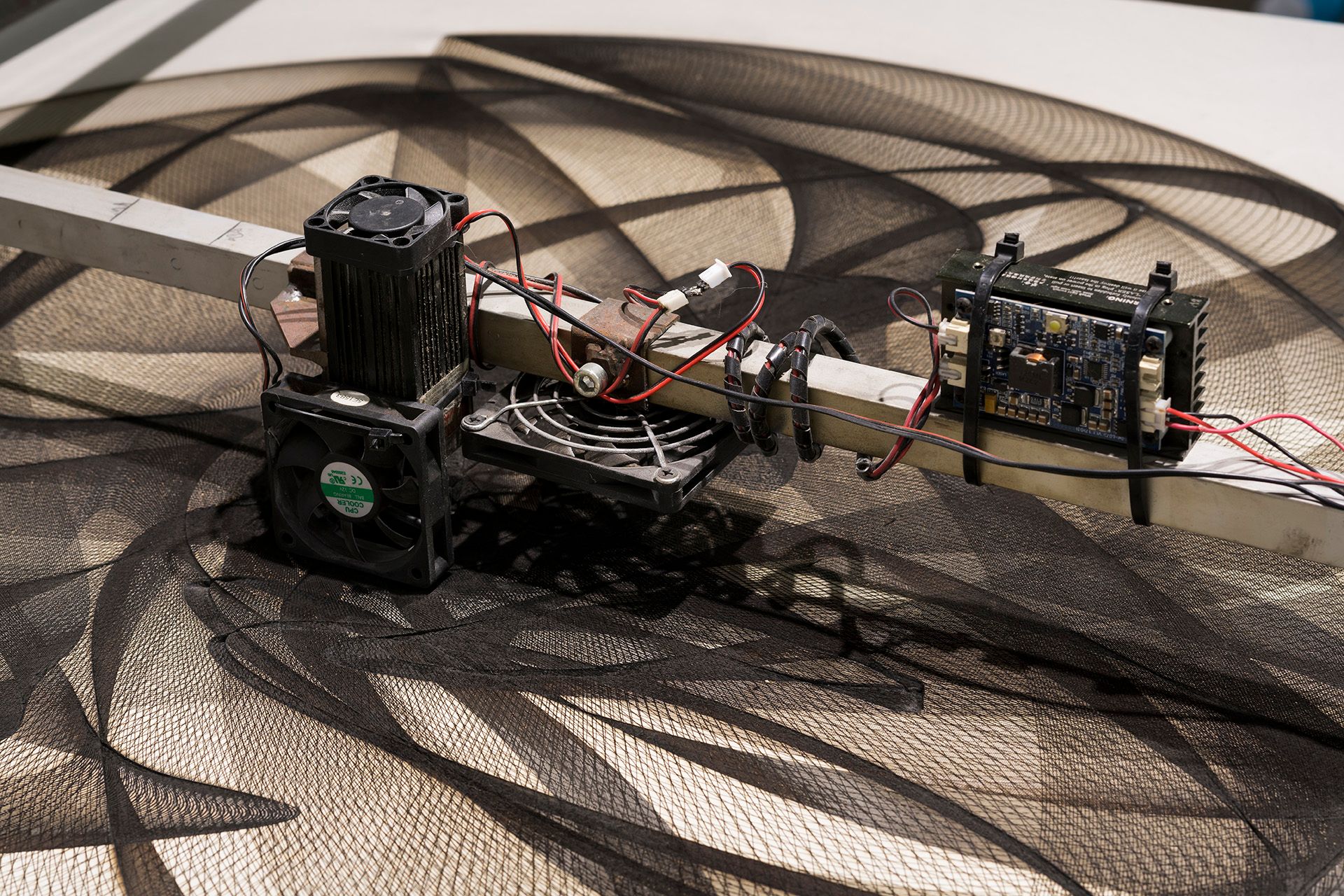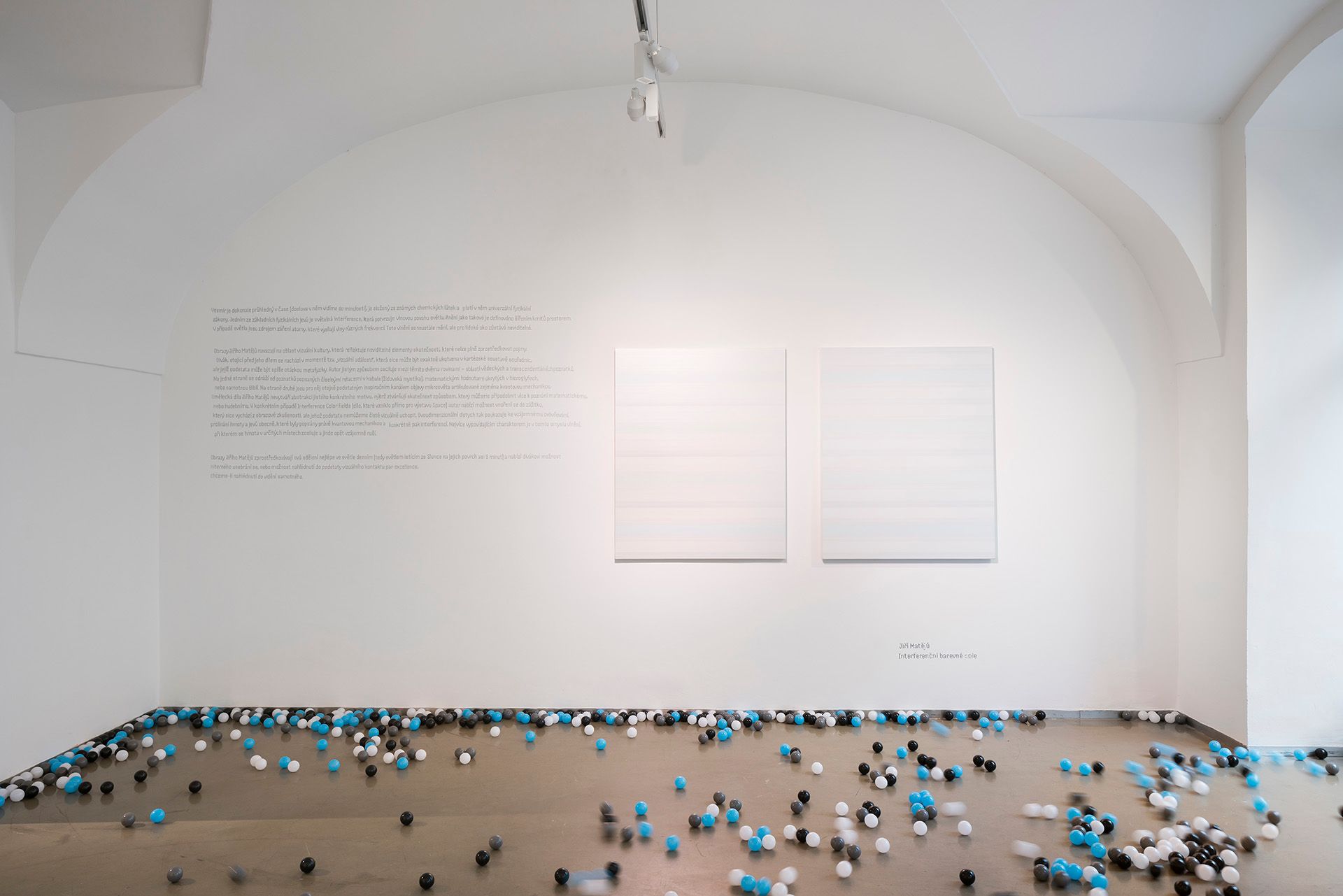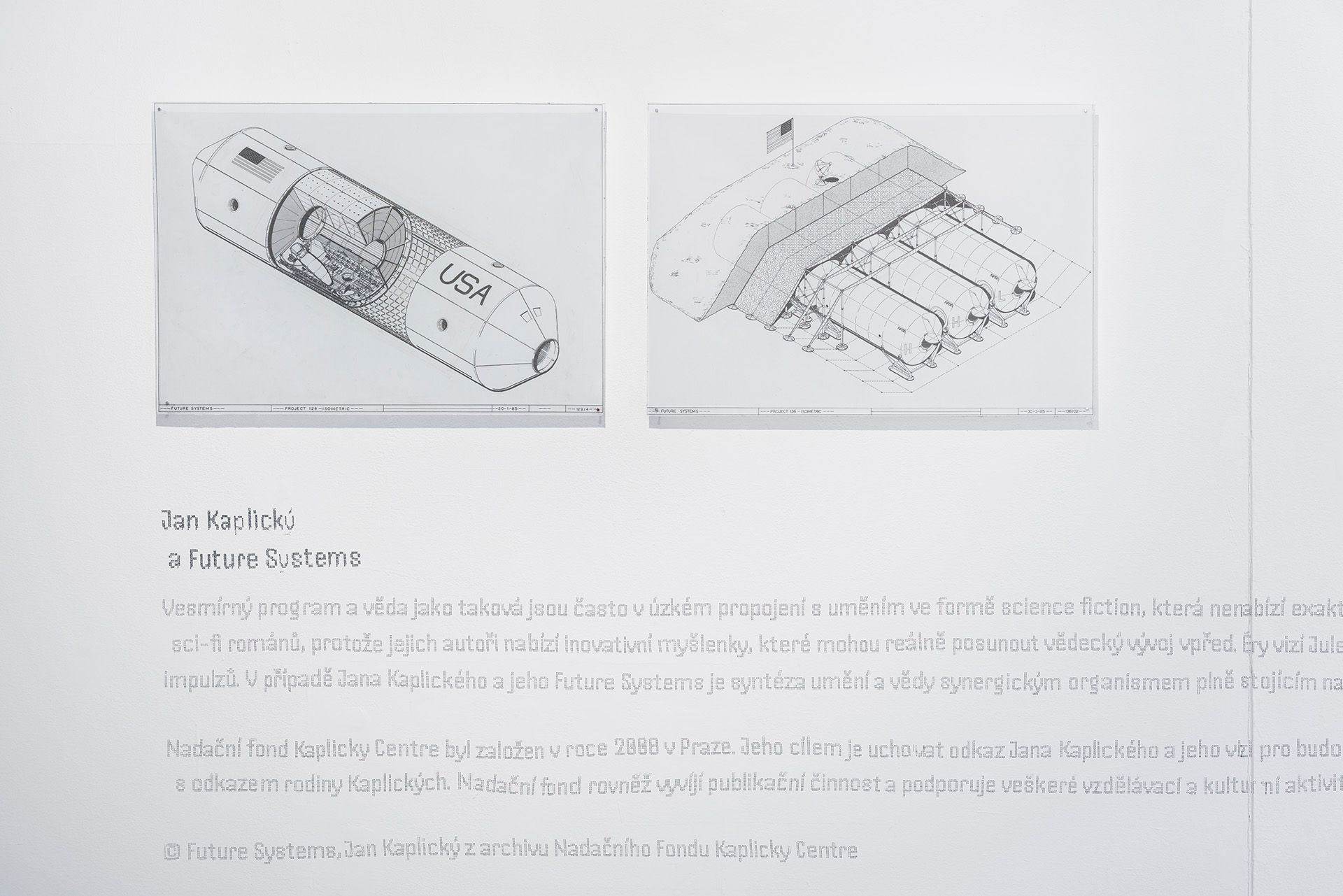
06 12
31 01
2020
SPACE
Skupinová výstava
Curated by Jan Dotřel
“I am just a child who has never grown up. I still keep asking these ‘how’ and ‘why’ questions. Occasionally, I find an answer.”
― Stephen Hawking
The universe is a constant, a unit of measurement, the basis of everything and also an eternal enigma. The fate of mankind is to seek, to search for the essence of being and to explore everything around us. Science – the discipline of the greats is one way to ask the questions and to search for answers. Another way to reach the essence of creation is through reflection or imitation – through art. At the beginning of any artistic creation or scientific exploration is a question the pious basis of philosophy.
Our home the Solar System is in all respects a mysterious place that harbors the worlds we know very little about. Certain information will remain hidden forever, while other is slowly revealed mainly thanks to the exponential development of science. Art and science accompanied the birth and evolution of humankind and mirrored its specific epochs and developmental stages. One theory of evolution says that a four-legged ape stood on two legs so that he could look at the stars and begin to unravel the mysterious correlations between them. Megalithic structures were undoubtedly created by architects observing the movement of celestial bodies and the floor plans are still breathtaking testament to the sophistication of ancient civilizations. Greek atomists thought of the universe as a composite of invariant parts traveling through void. Aristarchus of Samos was the first philosopher who proposed the heliocentric concept of the universe, Ptolemy on the other hand was a supporter of the geocentric system. Aristotle concluded that since the Earths shadow is circular in a lunar eclipse, our planet must be round. Tycho de Brahe was able to measure the geometrical movement of Earth and Mars, whose lines create a precise ellipse. Rudolphine Prague was full of astronomy and sculptures containing astrolabes, visors and models of the Solar system. Johann Wolfgang Goethe, René Descartes and Isaac Newton were fascinated by the light itself and tried to understand its essence. All these themes have their roots in the Universe, and these compulsive tendencies to understand the essence of it have become a continuous artistic motive from the Greek philosophers up to the present. Every revolutionary discovery entails a paradigm shift that in turn directly influences other discourses – whether it is the heliocentric revolution, the emergence of Theory of relativity, or the long-awaited results of the scientific efforts of the European Organization for Nuclear Research (CERN).
The space exploration era pushes the boundaries of knowledge much further. For example, the Cassini probe photographed a gigantic hexagonal storm on Saturns Pole, a giant gas cloud rotating in the shape of a hexagon – and of its origin we know almost nothing. On other gas giants (Jupiter, Uranus, Neptune) there exists a special phenomenon of diamond rain – the internal structure is aligned to the geometry of platonic bodies. The construction of orbital telescopes will allow us in a few years to observe occurrences that are even closer to the very beginning of the universe.
The above list of events and personalities is not a complex one and is abbreviated. Nevertheless, it illustrates humanitys long-term journey to the limits of knowledge. Night sky and the sequence of the annual cycle – these have always been the inspirational channels of art, philosophy and science – that ideally stand side by side and support one another.
The SPACE exhibition directly follows the concept of the Kvalitář Gallery to present Art, Design and Architecture altogether. We tried to imprint this principle of “Gesamtkunstwerk” into this exhibition and introduced those artists, designers and architects for whom the theme of the Universe is a natural inspiration, not just a motif that works only based on visual similarity or metaphor. We also invited Science – the mother of all rational and empirical knowledge – to join this trinity of art disciplines. It is this synthesis of artistic and scientific disciplines that should provide the observer with a broader horizon of knowledge. And if at the end the visitor leaves the Exhibition with a question in his mind – not with a mere statement – even better.
Artists:
Jakub Berdych Karpelis
Herrmann & Coufal
Jan Dotřel
Jan Kaplický, Future Systems
Ines Karčáková
Skupina DUNA
Jiří Matějů
Yuri Naumovich Lipsky
Jozef Mrva Ml.
Muonionalusta
Jakub Petr
Serban Savu
Štěpánka Sigmundová












